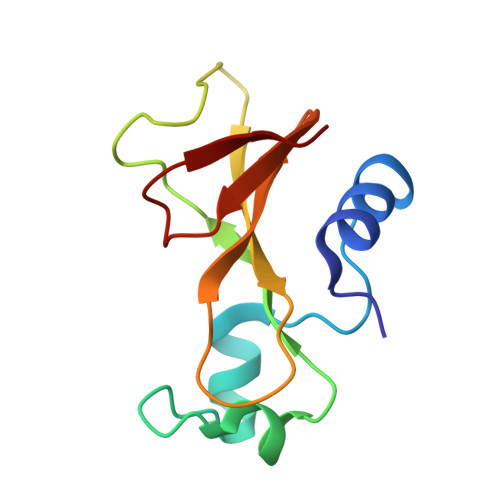Crystallographic analysis of Phe-->Leu substitution in the hydrophobic core of barnase.
Chen, Y.W., Fersht, A.R., Henrick, K.(1995) Acta Crystallogr D Biol Crystallogr 51: 220-231
- PubMed: 15299323
- DOI: https://doi.org/10.1107/S0907444994008851
- Primary Citation of Related Structures:
1BRG - PubMed Abstract:
The crystal structure of a barnase mutant, Phe-->Leu7 has been determined to 2.2 A resolution. No structural rearrangement is observed near the mutated residue. The F7L mutation is highly destabilizing and this is caused by the loss of extensive van der Waals contacts that wild-type Phe7 made with its neighbouring residues, and the exposure of a large hydrophobic pocket on the surface of the protein. The side-chain conformations of the mutated Leu7 residue have torsion angles chi(1) ranging from -138 degrees to -168 degrees and chi(2) ranging from +16 degrees to +70 degrees, for the three molecules in the asymmetric unit. These angles do not agree with the most frequently observed conformations in the protein side-chain rotamer library [Ponder & Richards (1987). J. Mol. Biol. 193, 775-791]. However, when compared to a more recent 'backbone-dependent' rotamer library [Dunbrack & Karplus (1993). J. Mol. Biol. 230, 543-574], the side-chain conformation of Leu7 agrees well with that of the most frequently observed rotamers. The side-chain conformation of Leu7 was found to be dictated by two factors: it has the lowest conformational energy and it buries the most hydrophobic surface area.
Organizational Affiliation:
Centre for Protein Engineering, Medical Research Council Centre, Cambridge, England.





















